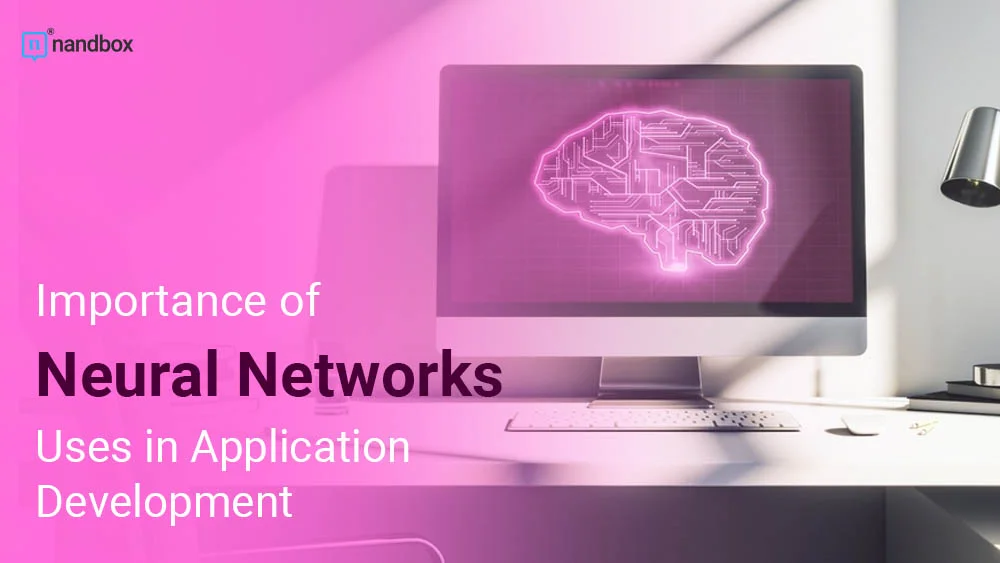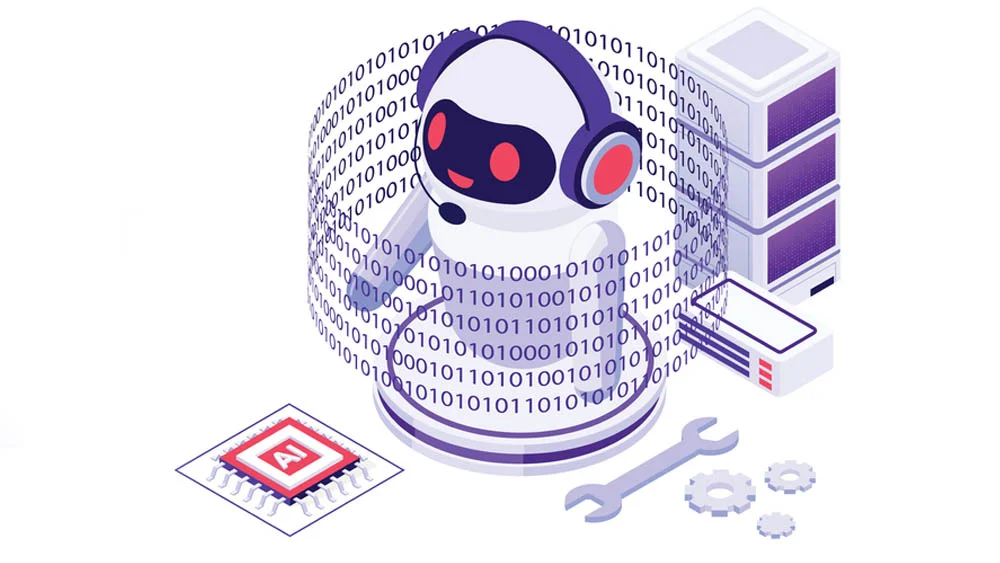Have you ever pondered what goes on within the human brain? There’s a strong chance you studied about it in class. Similar to neurons in the human nervous system, neural networks serve a similar purpose. Neural networks are a type of artificial intelligence that can learn and adapt to new information. They are becoming increasingly popular in application development as people use them for a wide range of tasks, from image recognition to natural language processing. In this article, we’ll explore the many uses of neural networks and how they can benefit your projects.
The most common machine learning methods now in use are artificial neural networks (ANNs). These neural networks were initially created in the 1970s, but current advances in processing artificial intelligence causes them to be highly popular and widespread. Neural networks are responsible for the sophisticated user interface that keeps you interested in every website, application, or other digital platform you use.
All About Neural Networks: A Quick Overview
Neural networks, which is an artificial intelligence invention; fashions after the composition and operation of the human brain. Developers create them of layers of networked neurons that process and transfer information. As we previously mentioned, the method by which the human brain sends information to the body through the nerves served as its inspiration. Each neuron takes information from other neurons and processes it using mathematics to create an output. The network modifies its balance and biases using a method known as back-propagation to increase its precision over time. This allows neural networks to learn and adapt to new information, making them powerful tools for a wide range of applications.
Developing Artificial Neural Networks: Identifying Neural Networks Uses
As technical as it may get, I want you to bear with me and get to know this interesting aspect people tend to ignore when it comes to artificial intelligence knowledge. A neural network is a structure that consists of many interconnected neurons, whereas a neuron is merely a node with several inputs and one output. Neural networks must learn to link incoming and outgoing signals during their “learning phase” in order to perform their tasks. They then begin to operate, taking in data as input and producing output signals based on the gathered data.
In detail, the input node receives the data in numerical form. Each node’s allocated number in the data serves as an activation value. The number increases as the activation becomes stronger. , the activation value is transmitted to the next node based on the activation function and weights. Using the transfer function (activation function), each node calculates and updates the weighted total. This simply performs a function of activation. This neuron alone performs this function. The neuron then determines whether it needs to transmit the signal or not. The weights that the ANN modifies determine the signal extension.
Up until it gets to the intended node, the activation moves throughout the network. The output layer communicates the information in a clear way. Utilizing the cost function, the network compares the output with the anticipated output. The cost function is the difference between the actual and projected values. The result aligns more closely with the desired one, the lower the cost function.
What Is Back Propagation in Artificial Neural Networks?
Developers call the basic foundation of neural network training “backpropagation”. It is crucial for neural networks to learn and get fed with data in this way. The data enters the network’s input layer and moves on to the output layer. The output will then be equal to the expected output according to the cost function. The data returns if the cost function’s value is high, and the neural network learns to lower the cost function’s value by changing the weights. When the weights set properly, the error rate decreases, and the model becomes certain.
Forward Propagation: A Step Forward to Help You Calculate Input Mistakes
Data enters into the input layer and then transferred throughout the network to the output value. The user compares the value to the anticipated outcomes. The following stage involves computing errors and sending information backward. Now, the user can update the weights and train the neural network. The structured algorithm allows for simultaneous weight changes by the user. It will let the user identify the weight in the neural network that is responsible for the error.
Neural Networks Uses: Image and Speech Recognition
One of the most popular uses of neural networks is in image and speech recognition. By training a neural network on a large dataset of images or audio recordings, it can learn to identify patterns and features that are characteristic of certain objects or words. App developers use this in applications such as facial recognition for security purposes, or speech-to-text transcription for accessibility. Neural networks have shown impressive accuracy in these tasks and will continue to improve as more data is fed into them.
Natural Language Processing (NLP)
Another exciting use of neural networks is natural language processing (NLP). NLP involves teaching computers to understand and interpret human language, which can be incredibly useful in a variety of applications. For example, chatbots and virtual assistants use NLP to understand and respond to user requests. Sentiment analysis, which involves analyzing large amounts of text to determine the overall sentiment or emotion behind it, uses neural networks as well. This can be useful for businesses looking to understand customer feedback or for monitoring social media for brand mentions.
Predictive Analytics and Forecasting
Predictive analytics and forecasting also use neural networks. By analyzing large amounts of data, neural networks can identify patterns and make predictions about future trends. This can be useful in a variety of industries, such as finance, healthcare, and marketing. For example, you can use a neural network to predict stock prices in online stock trading or patient outcomes based on medical data. Forecasting data like that is one of the main uses of neural networks and is of great benefit to app developers. By using neural networks for predictive analytics, businesses and organizations can make more informed decisions and stay ahead of the competition.
Fraud Detection and Cybersecurity
Security sectors also uses neural networks for fraud detection and cybersecurity. By analyzing patterns in data, neural networks can identify potential threats and anomalies in real-time. This can be especially useful in industries like finance and banking, where fraud prevention is a top priority. You can also use neural networks to detect and prevent cyberattacks by analyzing network traffic and identifying suspicious activity. As cyber threats continue to evolve, the use of neural networks in cybersecurity is becoming increasingly important.
Aerospace Engineering
The term “aerospace engineering” is broad and includes advancements in both airplanes and spacecraft. Some of the important areas that neural networks have taken over our fault diagnostics, high-performance autopiloting, protecting aircraft control systems, and modeling important dynamic simulations. lag in time It is possible to simulate nonlinear dynamic systems using neural networks.
People can use neural networks to know the Delay in time For feature recognition that is independent of position. Thus, the method based on time-delay neural networks is capable of pattern recognition. By copying the original data from feature units, neural networks automatically create patterns that you can recognize.
Time-neural networks (TNNs) are additionally employed to give the NN models stronger dynamics. Since passenger safety on an airplane is of the utmost importance, algorithms developed using neural network systems guarantee the accuracy of the autopilot system. Since the majority of autopilot functions are automated, it’s crucial to make sure that security is maximized.
Signature and Handwriting Verification and Analysis
The self-explanatory word “signature verification” refers to the process of confirming a person’s signature. To double-check a person’s identity, banks, and other financial institutions utilize this important neural network option.
Typically, the signatures are examined using a signature verification program. Signature verification is a crucial component that aims to carefully evaluate the authenticity of signed papers because instances of forgery are rather widespread in financial organizations. The signatures are validated using artificial neural networks. ANNs are taught to distinguish between authentic and fake signatures. Both offline and online signatures can be verified using ANNs.
The ANN model can differentiate thanks to the given data. The ANN model makes use of image processing to extract features. In forensics, handwriting analysis is crucial. The variations in two handwritten documents are also evaluated using this approach. The act of writing random phrases on a white page is frequently employed in behavioral analysis. Handwriting analysis and verification are performed using convolutional neural networks (CNN).
Creating Chatbots
Developers use this technological option to create chatbots. Chatbots are robots that are designed to chat with humans in a way that is realistic enough using NLP. It simply mimics the human way of chatting through datasets that are programmed into them to take their input. Chatbots function well with neural networks because they both can learn from samples or data that is inserted into them through ML and NLP.
Neural network-powered chatbots have several successful examples. Both large and independent developers produce them.
Chatbots are getting more practical as they become more lifelike. They can be used to support users, provide information, and provide customer service. They can also be employed to amuse others by playing games or cracking jokes. Neural network-powered chatbots have a plethora of possible uses. They might develop and become even more realistic in the future, offering us everyday companionship, help, and amusement.
Final Thoughts to Wrap It Up
Neural networks and their uses are of great importance, but unfortunately, not everyone who doesn’t care enough about diving into technical knowledge is indulged enough to read about them. This is why we felt the urge to write about the basics for you to get to know how important they are when it comes to application development and other significant services.
Application development might sound complicated enough for some. As a matter of fact, it could be very complicated if you opt for the “hire a developer” option. Other than that, if you choose to act through a no-code app builder, you will be saving yourself a lot of hassle. You will save time, money, and effort. Our native no-code app builder, “nandbox,” has the aim of facilitating your whole app development process. With our simple drag-and-drop interface, you won’t experience the tiring process of adding your desired features to your app window.
You will also be able to check out all of the changes through a preview simulation that we provide you with. Sign up now for nandbox’s native no-code app builder and get started with our pre-made templates and various branding options. You will also be able to access nandbox’s documentation section, which has every single detail about our features and modules. Additionally, it will show you feature configuration steps and how to navigate the app builder effectively and with ease.






